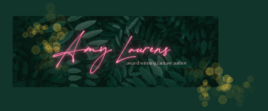Missed out on Day 1 of Plotting? Catch up here!
Okay, so, yesterday I confessed to you my secret nightmare as a writer: structure. Not because I resent being constrained by arbitrary rules or whatever, but because actually, after reading a crap-tonne of new-writer stories in the last ten years, I have a healthy appreciation for a well-structured story and I’m *just* *not* *GOOD* at it myself. Which, URGH. I’m an English teacher and a writer and I have *experience* with these things and I read a lot and I know what good structure looks like, so why, why, WHY is this whole structure/plotting/pacing thing not more intuitive for me? Seriously?! Gnurgh.
Anyway. The turning point for me was the discovery of beat sheets. Beats are nothing more or less than those points you have to hit in a structure – like, there’s a call to action at the end of act one, a turning point in the middle, a climax at the end – that sort of thing. But those three or five or eight or twelve beats never seemed to be enough for me to keep up the pacing in between times, and not meander around in a way that left the conflict dragging. Oh, the scenes are FUN and PRETTY and SHINY and often also even WITTY, but they still… meander.
And look: I’ve nothing against meandery books. I like lit. fic., or at least as much of it as I do most genres. I appreciate character-driven, wandery sorts of stories. But I also know that you have to be a really good writer to pull them off in a way that makes them accessible for public consumption, and I’m not ashamed to admit that my primary goal here is to write stories that people actually want to *buy*. I write for myself, because if I didn’t I’d get so twisted up in anxiety that I wouldn’t write at all (why hello there, 2012-2013). But I want the end results to be accessible for other people to *enjoy*. There’s that saying, right: I write for myself and revise for my readers. Yup, good idea right there. Except thus far my revisions have always been nightmarish slogs of retrofitting structures and proper character arcs to Really Broken Drafts, and quite frankly, that process sucks. If I can learn to do my structure/pacing/plotting/character arc right the first time, I’ll save hundreds of hours in revision – and once you know the rules, THEN you can choose to break them at will.
Hence, beat sheets.
First came Save The Cat by Blake Snyder, a book on writing screenplays that delves into structure and the different ‘genres’ that movies actually fall into. I highly recommend the book, if only for the reconsideration of how genre applies to stories, and how knowing what genre you’re actually writing can change the way you look at the book – and you’ll be surprised by the genres and their definitions, too, because it’s not about the trappings and cosmetics and setting of the story, but rather the plot/character arc and the beats that the story needs to hit.
Secondly, Jami Gold’s amazing free beat sheets, based on the information in Save The Cat and another book I haven’t read, Story Engineering by Larry Brooks. I’d tried to make something like this for myself years ago and failed, so when I found these I was super excited.
And finally, something I wrote up myself based entirely on Jami’s beat sheets just recently – while I was visiting Liana, in fact. I got sick of using the calculator in Jami’s sheets to calculate when things were supposed to happen, and on the basis that I was pretty much aiming for a 40-scene, 80k novel or a 20-scene, 40k novella each time, I wrote up this beat list, which tells me which scene number each thing is supposed to happen in. As you’ll note, nearly every scene has a specific job, and knowing that has made a HUGE difference to my ability to keep the pacing of the story on track.
By way of experiment, I also used the novella sheet to plot out a novella while I was with Liana. It made the whole plotting process just like putting together a jigsaw, and while I’m sure there will still be things to fix and tweak, it’s the first time I’ve delivered Liana a plot and had the tick of approval with only a minor tweak or two. YAY ME I AM LEARNING THINGS WATCH ME LEARN. You can evaluate the success of this process yourself hopefully next year – this novella is one in my Puricorn (Age of Unicorns) universe (see short stories here and here) and I have a cover for it ready to go… I just need to write and edit it >.< 😀
Anyway. I hope that some of these resources are useful for you! Feel free to share some of your favourite plotting resources in return, and tune in tomorrow for an epic case study: How Not To Take Over The World!
